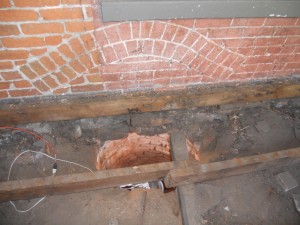It is interesting how things seem more and more interconnected as I learn different aspects of public history. On page 207, a section of chapter 7 is dedicated to “Reading the Building.” In class, we have discussed the Cyrus Jacob Uberuaga house and how just recently, it was discovered that a well was next to the house. Over time, the well had been covered up by a walkway and lost to history for years even though decorative brick work should have been a clue. (Are you proud of me? I figured out how to add media. Try and stop me now!)
It is so easy to look at a building without “seeing” it.
Last week, I happened across a documentary at the library about students from the University of Arkansas who scan famous buildings in order to see how they were constructed, any changes that have occurred over the years, and structural weaknesses that might not be seen by the naked eye. A small scanner collects a billion measurements of a building to form a 3-D model. So besides maps, photographs, and oral histories, there is new technology that helps historians “read” buildings in a scientific way. Don’t worry, there is still a need for nosing around the nooks and crannies of the buildings.
Here is a link for previews: http://www.pbs.org/program/time-scanners/
This link is for the digital scanning program at the University of Arkansas:
This program looks like too much fun and a great way to add a digital component to historical preservation and research. Boise State, take note!
